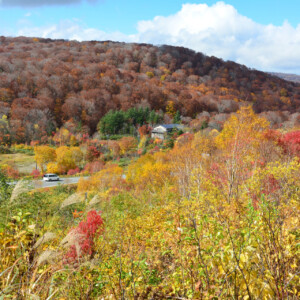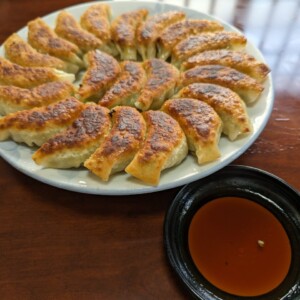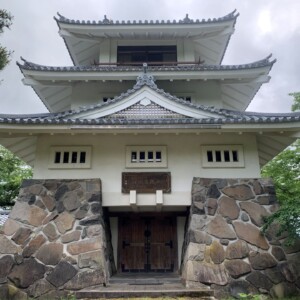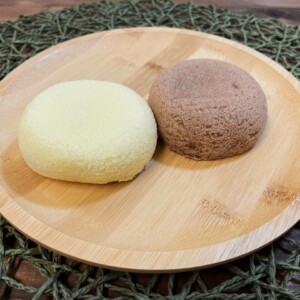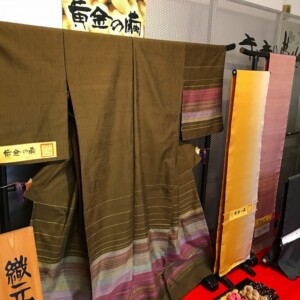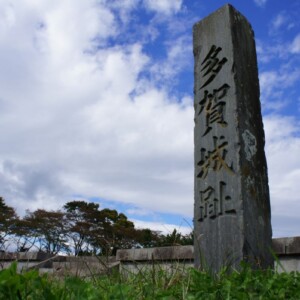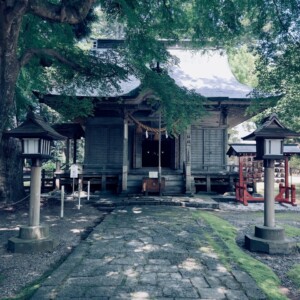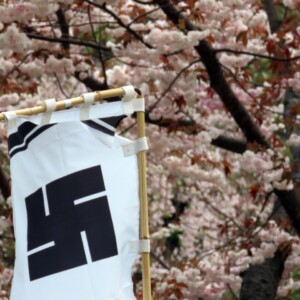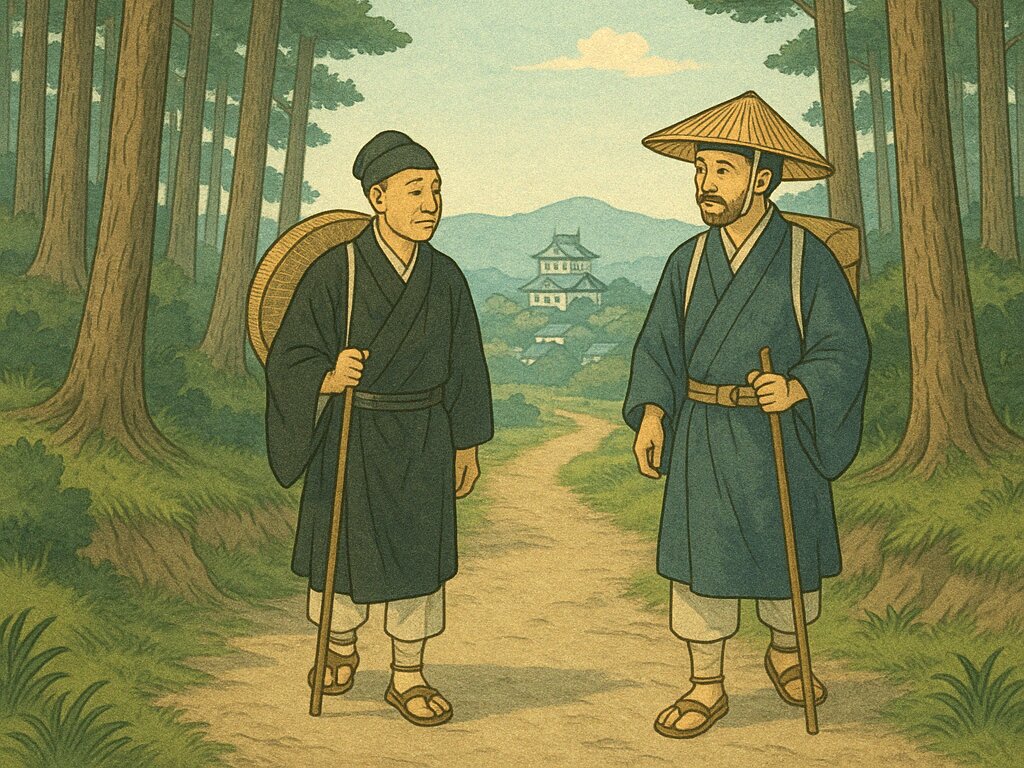
[Serialization: Following the narrow path in the back part 2] After arriving in Miyagi Prefecture, Basho and Sora aim for Sendai, the capital of forests.
table of contents
- 1 What is Oku no Hosomichi?
- 2 [Kasashima] Cross Kunimi Pass from Fukushima Prefecture and enter Miyagi Prefecture
- 3 [Takekuma] Head north through Miyagi Prefecture to the forest capital of Sendai
- 4 [Miyagino] Cross the Natori River and arrive at Sendai
- 5 [Detour to the back ②] What is the purpose of Basho's journey?
- 6 summary
- 7 [Series: Following the Oku no Hosomichi] Series article
On May 3, 1689 (6/19 of the new calendar), the haiku poetMatsuoBasho(Matsuobasho)and disciple'sSora Kawaileaves Iizaka Onsen and crosses Kunimi Pass, a difficult point on the Ou Highway, into Miyagi Prefecture.
There is a small amount of the old road left on Kunimi Pass on the Oshu Highway, and a Basho Monument , so you can still enjoy the atmosphere of those days.
What is Oku no Hosomichi?
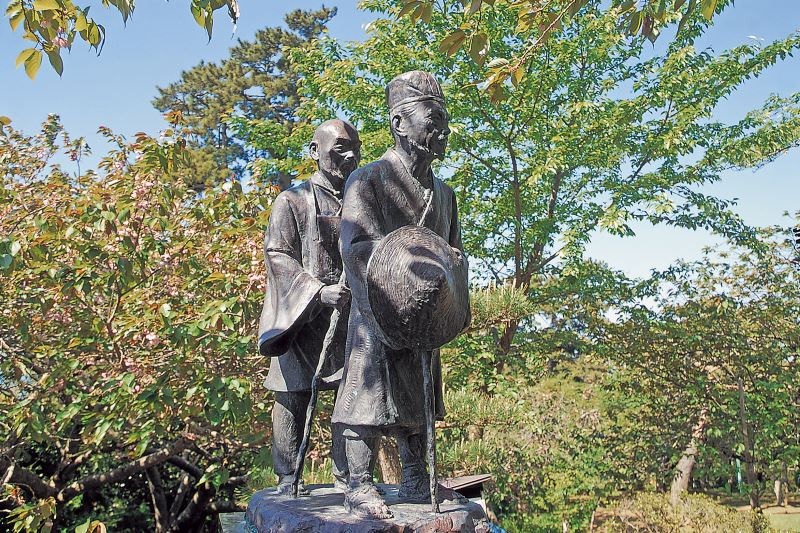
``Oku no Hosomichi'' is a journey in which the haiku poet Matsuo Basho and his disciple Kawai Sora travel from Edo to Mutsu, from Hokuriku to Ogaki in Gifu, visiting Utamakura and famous historical sites while composing haiku. This is a collection of travelogues.
Utamakura refers to famous historical sites whose images and emotions were woven into waka poems by poets from ancient capitals, and were the object of admiration for poets and haiku poets.
In the preface, ``Months and days are travelers for a hundred generations, and every year that comes and goes is also a traveler''. It appears in textbooks and is translated as "It's like a traveler."
It introduces the climate of Michinoku and the haiku poems that were composed there, and is a record of the 156-day journey of approximately 2,400 km from the start of the journey on March 27, 1689 (May 16, 1689 according to the current calendar).
[Kasashima] Cross Kunimi Pass from Fukushima Prefecture and enter Miyagi Prefecture
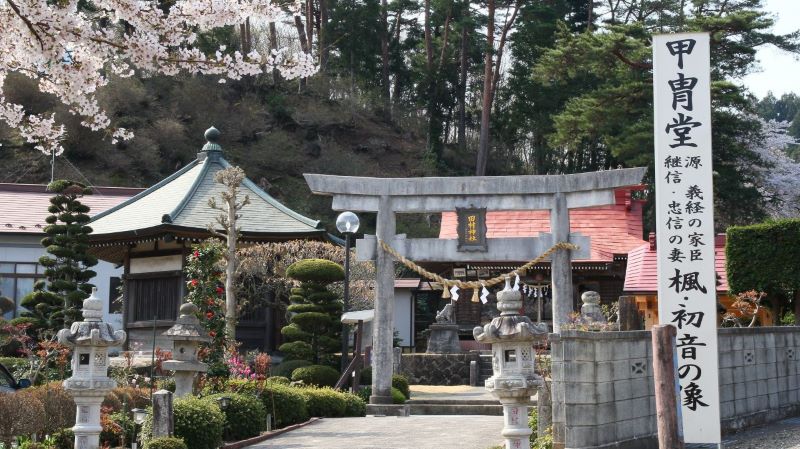
After departing from Iizaka Onsen, Basho and Sora the ``Kuwaori'' route to Oshu Kaido and enter Miyagi Prefecture, but Basho, who stayed at an inn with fleas and ticks at Iizaka Onsen, becomes unwell and his chronic illness returns. I was depressed.
However, he realized that even if he died on the journey, it was a divine destiny, so he gathered himself and crossed the ``Date-no-okido'' into the Sendai domain (Miyagi Prefecture).
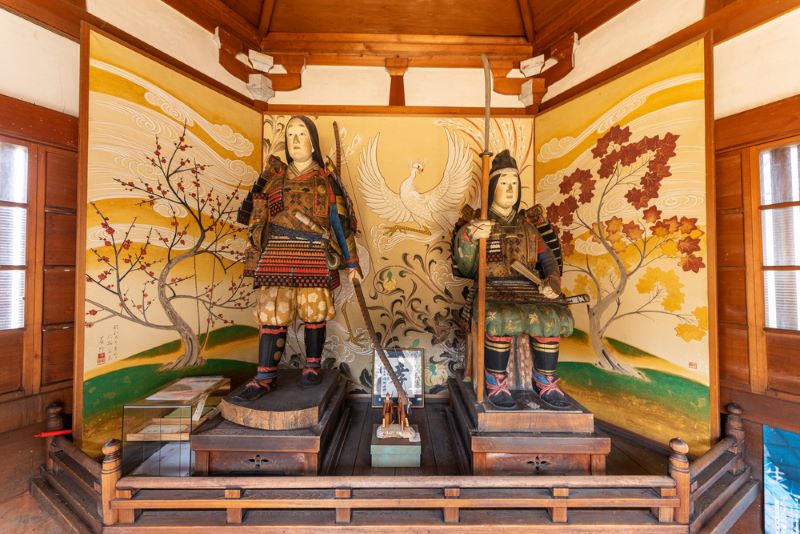
the Katchu-do Hall of Tamura Shrine on Abumizuri-zaka (Shiraishi City) , you can see statues of Sato Tsugunobu and Tadanobu's two wives, who served Minamoto no Yoshitsune, in their warrior costumes. It is said that he took up lodging in Shiroishi Castle on June 19th.
The next day, May 4th (6/20), we stopped at Iwanuma to see Takekoma Myojin (Takekoma Inari) and Takekuma Pine Kasajima in the distance. I entered Sendai with this in mind.
Here, Basho says in the text that he ``stayed in Iwanuma,'' but in Sora's accompanying diary, he stayed in Sendai on the 4th, and it is said that this may be a misunderstanding on Basho's part.
Tamura Shrine (Armor Hall) <Information>
- Facility name: Tamura Shrine (Kacchudo)
- Location: 115 Kamimukayama, Saikawa, Shiroishi City, Miyagi Prefecture
- Phone number: 0224-26-2315
- URL: Miyagi Prefecture Shrine and Shrine Agency official website
Google Map
Kasashima is Izuko's muddy path in May (Basho)
``Where is Kasashima (related to Fujiwara Sanekata)? I can't even visit it on this muddy road in May.'' This poem is written by Fujiwara Sanekata, a song written in the middle of the Heian period. He was assigned to Taga Castle (Miyagi Prefecture) as Mutsu no kami, but it is said that he died after falling from a horse on Kasashima Island.
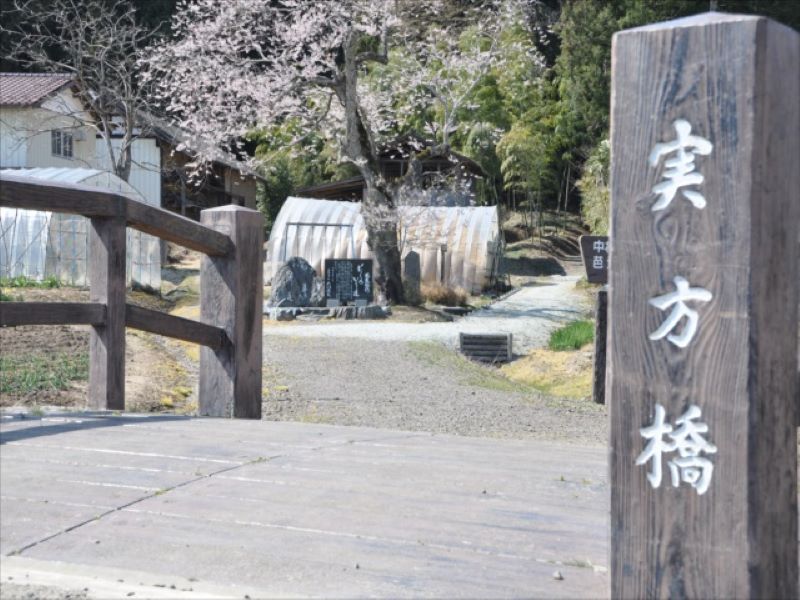
Later, Saigyo Hoshi visited this place and composed a song of condolence, and Basho, who admired Saigyo Hoshi, longed to visit, but his wish was not granted as he apparently fell ill at Iizaka and did not have the strength to walk on the muddy road due to the rain. did not.
Fujiwara Sanekata's grave still stands quietly behind a farmhouse in Kasashima.
Lieutenant General Sanekata’s grave<Information>
- Facility name: Tomb of Fujiwara Sanekata Asaomi (Lieutenant General Sanekata)
- Location: 42 Kitano, Aijima Shiote, Natori City, Miyagi Prefecture
- Phone number: 022-384-2111 (Natori City Education Department Culture and Sports Division)
- URL: Natori City official website
Google Map
[Takekuma] Head north through Miyagi Prefecture to the forest capital of Sendai
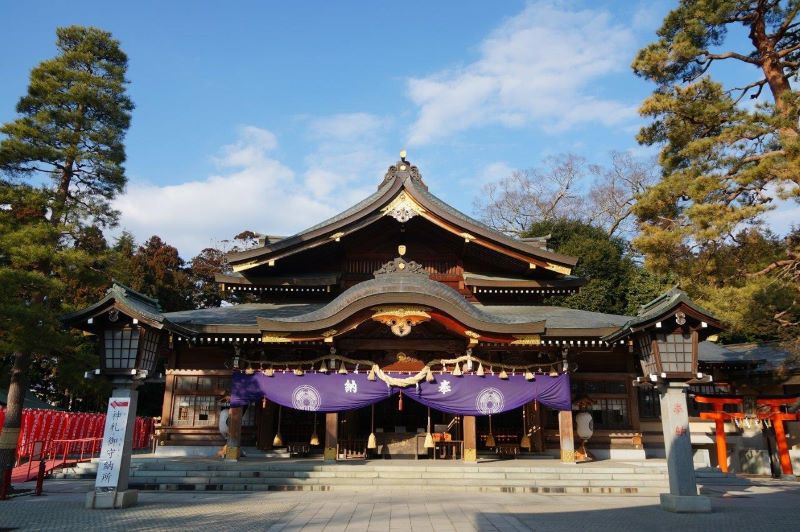
Takekoma Inari (Takekoma Myojin) , which is said to have been built by Ono Takamura, who was appointed as the provincial governor of Mutsu in June 842, with a spirit separated from Fushimi Inari , and its I visited the nearby Takekuma no Matsu
Basho was moved by the sight of the ``Niki no Matsu'', which was split into two branches at its base, and wrote a poem about it.
Takekoma Inari Shrine<Information>
- Facility name: Takekoma Inari Shrine (Takekoma Myojin)
- Location: 48-1 Uenodera Inari, Fukushima City, Fukushima Prefecture
- Phone number: 0223-22-2101
- URL: Takekoma Shrine official website
Google Map
From the cherry blossoms, the pine trees pass through March (Basho)
``Ever since I set out on my journey in March when the cherry blossoms were in bloom, I had hoped to see these two Takekuma pines, and three months later, my wish came true.''
Saigyo followed the footsteps of Noin Hoshi who saw this pine tree, and Basho followed him further and composed this poem, but the pine that Basho saw was said to be the 5th generation of the pine tree, and it was the fourth pine that the Hoshis had seen. It was a different pine than the previous one.
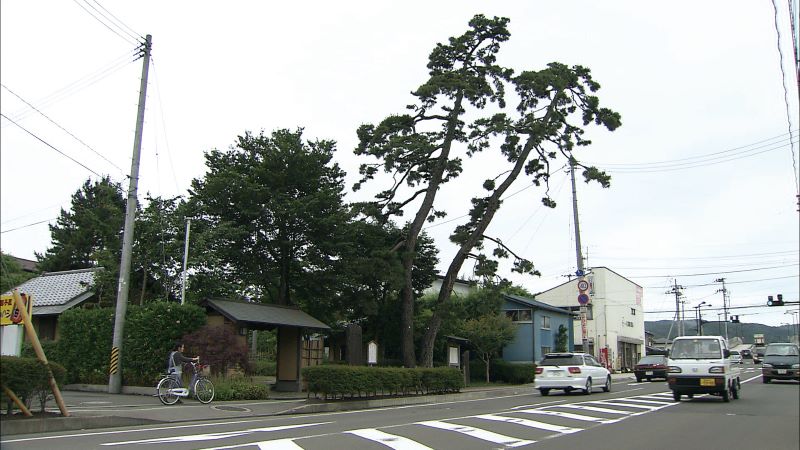
Furthermore, the current Takekuma pine tree is said to be the seventh generation, and the eighth generation pine tree has already been planted.
Takekuma pine <Information>
- Facility name: Takekuma no Matsu (Niki no Matsu)
- Location: 2-2-2 Niki, Iwanuma City, Miyagi Prefecture
Google Map
[Miyagino] Cross the Natori River and arrive at Sendai
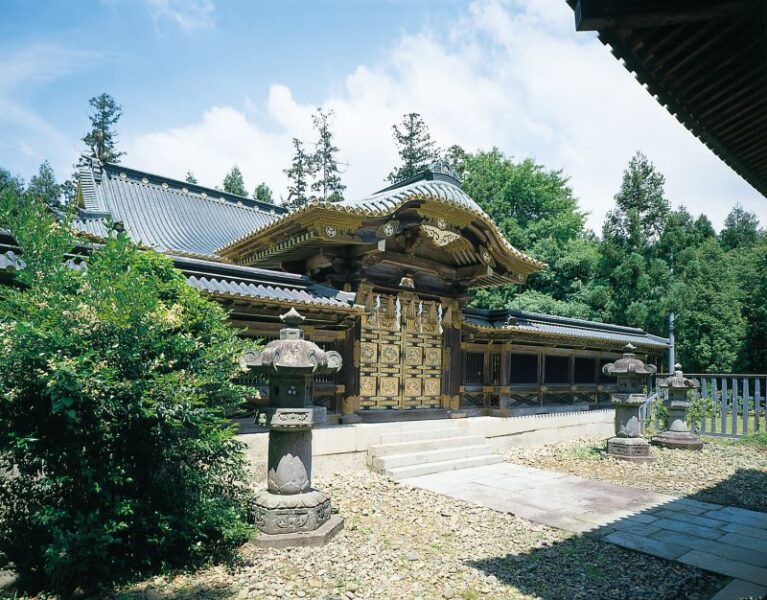
On May 4th (June 20th), Basho and Sora the Natori River, Osakiya in Kokubu-cho, Sendai, a castle town with 620,000 koku of land, for four days until the 7th. I'll stay the night.
During that time, I was guided by Kaemon, an artist who has been involved in the maintenance of famous historical sites of the Sendai domain for a long time and is said to have an understanding of elegance. I visited.
- Sendai Castle Otemon
- Kameoka Hachimangu Shrine
- Sendai Toshogu Shrine
- Tsutsujigaoka Tenmangu Shrine
- Mutsu Kokubunji Yakushido
Sendai Castle Otemonzeki<Information>
- Facility name: Sendai Castle Otemonzeki
- Location: Sendai Castle Otemonzeki, Kawauchi, Aoba Ward, Sendai City, Miyagi Prefecture
Google Map
Iris, tied to the feet, straw sandals cord (Basho)
This is a haiku that says, ``Let's take the straw sandals with the dark blue cords that were gifted to us by Kaemon and use them as iris flowers to decorate the Boy's Festival before setting off.''
Kaemon prepared grass sandals with navy blue cords, and also presented landscape paintings of Basho's next destinations, such as Shiogama and Matsushima It is said that he was moved by the fact that he was a human and wrote the poem.
【Detour to the back ②] What is the purpose of Basho's journey?
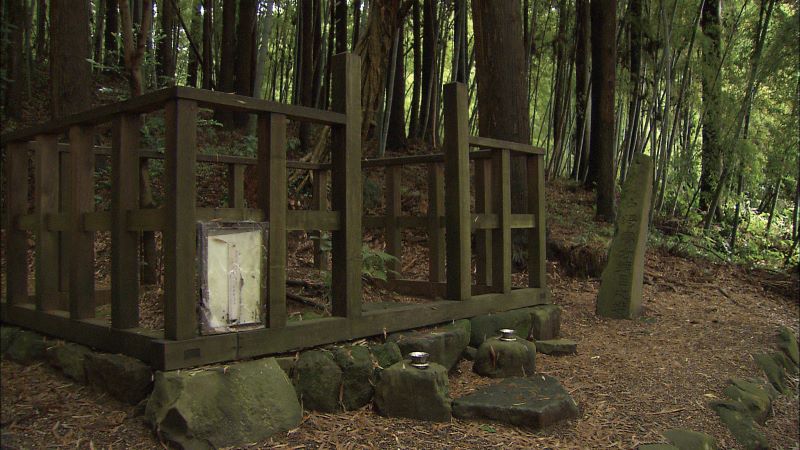
It is said that the purpose of the trip was to experience with one's own eyes the poetry of the monk Saigyo, whom Basho admired, and the famous historical sites visited by the priest Noin, who Saigyo followed in his footsteps, and to experience the poetic spirit of the ancients.
Utamakura were created by poets from the capital, imagining famous and historic sites in remote areas, and Basho probably wanted to see them with his own eyes. On this journey, Basho learned about the cosmological view of ``Fundo,'' which holds that the universe is constantly changing (fashionable) but unchanging (Fujiki), and the way of life known as ``Karumi,'' which is the idea of overcoming a life full of sorrows with a smile. I understand.
summary
Basho and Sora, who entered Miyagi Prefecture from Fukushima Prefecture, proceeded to go further into the depths.
Basho fell ill due to the poor accommodation environment at Iizaka Onsen, but he regained his strength, saying, ``Even if I lost my life on the journey, it was my destiny.''
After arriving in Sendai, the castle town of the Sendai Domain with a capital of 620,000 koku, and spending four nights there, we headed to Matsushima, one of the places we had wanted to visit on this trip, on May 7th (June 23rd).










![[Serialization: Following the narrow path of the depths ③] After leaving Sendai, Basho and Sora arrive at Matsushima by boat from Shiogama. Oku no Hosomichi 3](https://jp.neft.asia/wp-content/uploads/2023/09/8d13d45bbc671b05b0b298bc51e72716-150x150.jpg)
![[Series: Tracing the narrow path of the depths ④] Arriving at Hiraizumi, the Pure Land of the three generations of Fujiwara Basho, a dream of Basho Oku no Hosomichi 4](https://jp.neft.asia/wp-content/uploads/2023/09/addf9e31ea8b62f6903d5ad9db53d39e-1-150x150.jpg)
![[Serialization: Following the narrow path in the back of the mountain ⑤] Struggling with the narrow path through the mountain pass and the difficult checkpoints, we headed to Dewa Province Oku no Hosomichi 5](https://jp.neft.asia/wp-content/uploads/2023/09/28a347e9b86312617fa5dcb3d266a91b-1-150x150.jpg)
![[Series: Following the narrow path to the back of the mountain ⑥] Go down the Mogami River and visit the Dewa Sanzan, one of Japan's three major Shugendo practices Oku no Hosomichi 6](https://jp.neft.asia/wp-content/uploads/2023/09/786c5389e81e05d443e2f0e37aae4289-1-150x150.jpg)
![[Serialization: Following the narrow road in the back part 7] The journey is finally coming to an end, from Dewa to Uzen, and then to Hokuriku Oku no Hosomichi 7](https://jp.neft.asia/wp-content/uploads/2023/10/ef46a9f4e23d51f52518cd66fade3cd6-1-150x150.jpg)
![[Serialization: Following the narrow path in the back part 1] Your trip to Tohoku begins with "crossing the Shirakawa barrier" Oku no Hosomichi 1](https://jp.neft.asia/wp-content/uploads/2023/09/bf359c7fd6a5dbae7719b52ccd3b870b-1-150x150.jpg)
![Matsuo Basho was impressed by the legendary landscape of Kujukushima, the elephant, which is not seen now [Nikaho City, Akita Prefecture] Image of Kujukushima (Zogata)](https://jp.neft.asia/wp-content/uploads/2024/11/e07987a7f27f41ed4fd79661bf32afbc-150x150.jpg)
![[Chokaisan and Tobishima Geopark: Nikaho Edition (1)] Kujukushima, which is known alongside Matsushima, was landed in a major earthquake. 1999 Island Winter 1_Nikaho City Tourism Division](https://jp.neft.asia/wp-content/uploads/2024/10/9832b69b3165ff52241c17ad3f8bf591-150x150.jpg)


